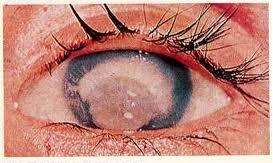Disorders
- Anorexia Nervosa
- Binge Eating Disorder
- Bitot's Spots
- Bulimia Nervosa
- Macrocytic Anemia
- Megaloblastic Anemia
- Night Blindness
- Peptic Ulcer
- Prophylaxis
- Rhodopsin
- Rickets Disease
- Scurvy Disease
- Wilson’s Disease
- Xerophthalmia
- Hemochromatosis
- Siderosis
- Thalassemia
- Sideroblastic Anemia
- Porphyria Cutanea Tarda
- Sickle Cell Anemia
- Kwashiorkor
- Menkes Disease
- Neutropenia
- Keratomalacia
- Beriberi
- Pellagra
- Macrocytic
- Megaloblastic
- Pernicious Anemia
- Scurvy
- Rickets
- Osteomalacia
- Abetalipoproteinemia
- Muscular Dystrophy
- Haemolytic Anaemia
- Cholestatic Constipation
- Pretibial Myxedema
- Cretinism Diesease
- Hypothyroidism
- Hypothyroidism
- Feline Hyperthyroidism
- Graves Disease
- Plummer’s Disease
- Thyrotoxicosis
- Acrodermatitis Enteropathica
- Congenital Hypothyroidism
- Hashimoto’s Thyroiditis
- Hyperthyroidism
- Keshan Disease
- Lose Weight with Hypothyroidism
- Metal Fume Fever
- Postpartum Thyroiditis
- Thyroid Storm
- Subclinical Hypothyroidism
Night Blindness: Keratomalcia
Keratomalcia is also known as Night Blindness, Retinol Deficiency, Vitamin A Deficiency, Xerophthalmia and Xerotic Keratitis. It is an ocular condition when the cornea becomes dry, soft and thin, and then ulcerates, usually affecting both eyes. It occurs as a result of severe deficiency of vitamin A in addition to an inadequate diet, sprue, cystic fibrosis etc.

Secondary conditions may also be associated to Night Blindness with impaired absorption, storage, or transport of vitamin A, such as celiac disease, ulcerative colitis, cystic fibrosis, liver disease, or intestinal bypass surgery, as well as any condition that leads to mal-absorption of fat soluble vitamins.
The most common cause worldwide is deficiency in diets due to the poor intake of vitamin A. In some developing countries, this deficiency associated with Night Blindness are the major cause of childhood blindness as a result of nonselective general malnutrition observed in under nourished children mainly residing in slums whose diet is deficient of vitamins and proteins. Nearly 20,000 young children go blind every year due to severe deficiency.
Vitamin A is essential for normal vision, healthy skin, proper bone growth, and protection of the mucous membranes of the digestive, respiratory, and urinary tracts against infection. One of the early signs of vitamin A deficiency that leads to Night Blindness is a "Bitot's spot1", characterized by a foamy, wedge-shaped area in the conjunctiva, usually on its temporal side.
Bitot's spots are white plaques of keratinized epithelial cells found on the conjunctiva of young children with remarkable vitamin A deficiency, although these spots can be seen without vitamin A deficiency, possibly as result of exposure, Corneal softening, ulceration and eventually, dissolution. Superimposed infection is also a frequent accompaniment of Night Blindness and both can lead to blindness.
Although, Night Blindness is hastened by protein-caloric malnutrition, it also can be precipitated by a systemic illness including pneumonia, measles, or diarrhea. This condition presents itself with bilateral or unilateral centrally located, grey, indolent corneal ulcers surrounded by dull lack-luster hazy cornea, photophobia. After that, the cornea becomes soft, necrotic and perforation may occur.
Early symptoms of Night Blindness may include night blindness, characterized by poor vision at night or in dim light, as well as extreme dryness of the eyes, like in xerophthalmia, followed by wrinkling, progressive cloudiness, and increasing softening of the corneas. As the vitamin A deficiency advances, dry, "foamy," and silver-gray deposits may appear on the delicate membranes covering the whites of the eyes.
Without adequate treatment, increasing softening of the corneas may lead to corneal infection, rupture and degenerative tissue changes that result in blindness. To treat this condition a Vitamin A therapy and a protein-rich diet are essential.
The prescription of topical antibiotics is usually prescribed to prevent secondary bacterial infection. In addition, diverse oral supplements rich in vitamin A or beta-carotene and diet modification may be necessary as well.
Night Blindness is irreversible and causes permanent corneal scarring. It is also associated with secondary bacterial infection, corneal ulceration and necrosis, which is the cause of corneal perforation and panophthalmitis. It is important to provide regular vitamin A supplements in high risk areas to prevent this condition, although vitamin A should be avoided during pregnancy because of the risk of vitamin A embryopathy.
Early intervention by parents, doctors and health professionals can prevent permanent eye damage in children, so parents must be made aware of the situation and know in advance that they can prevent such conditions by feeding their children wisely. This condition can also occur in any apparently healthy individual at any age, and be developed relatively rapidly in a few weeks or over several months with deformation or destruction of the cornea into a cloudy gelatinous mass, extrusion of the lens and loss of vitreous humor.
